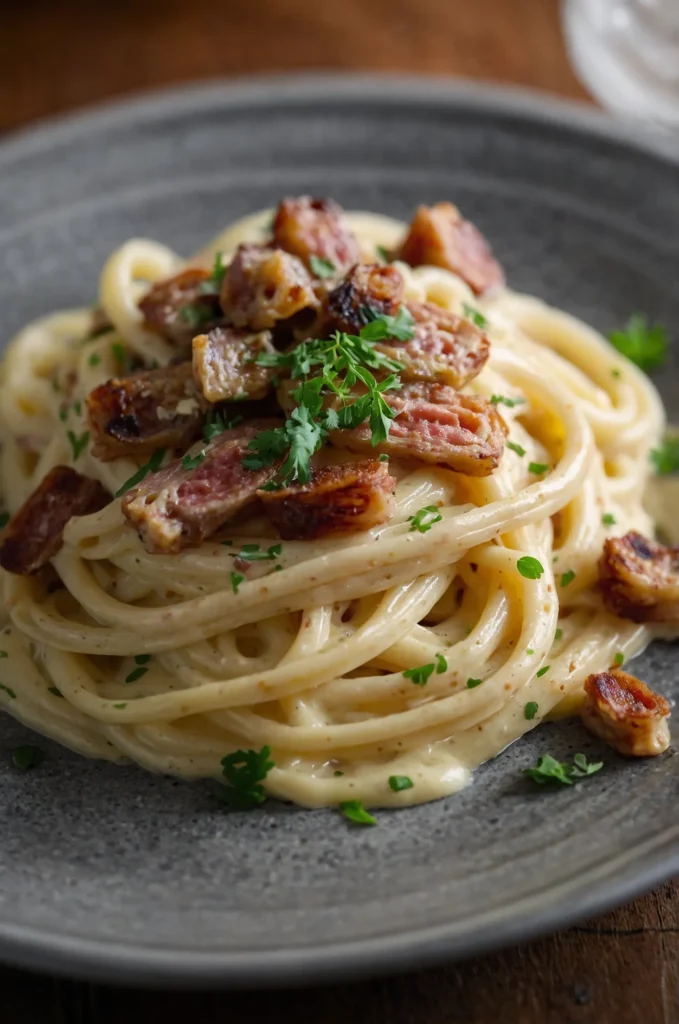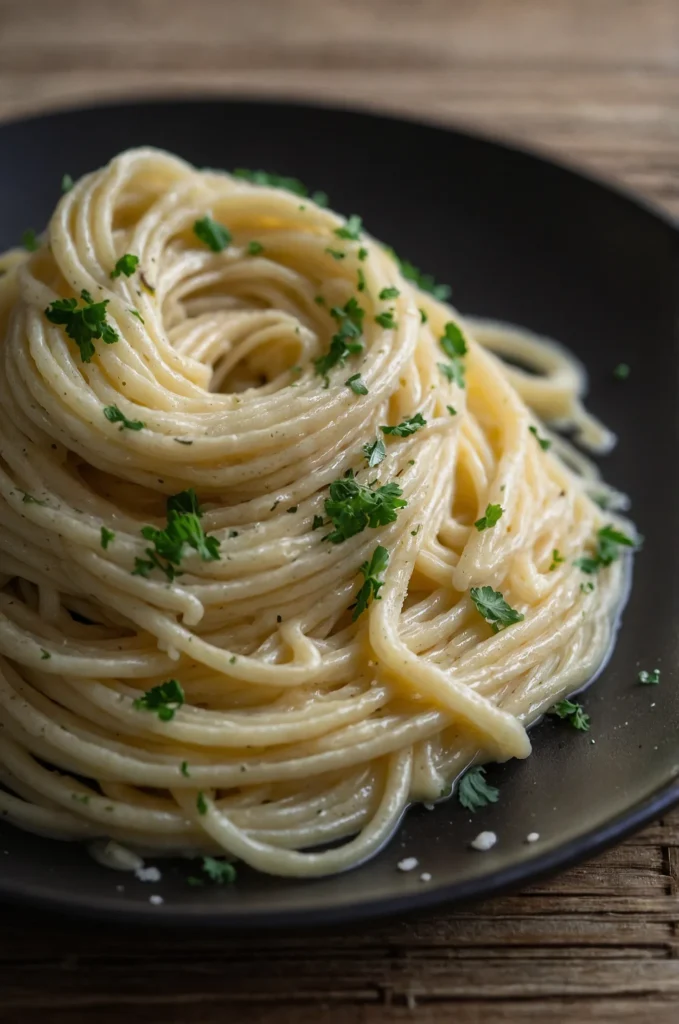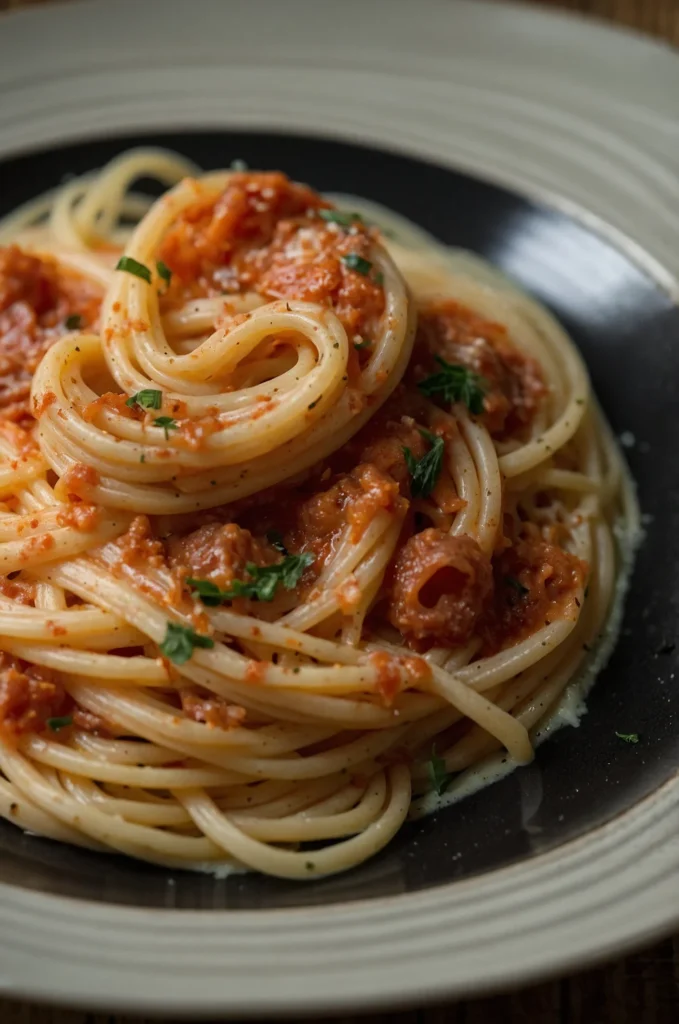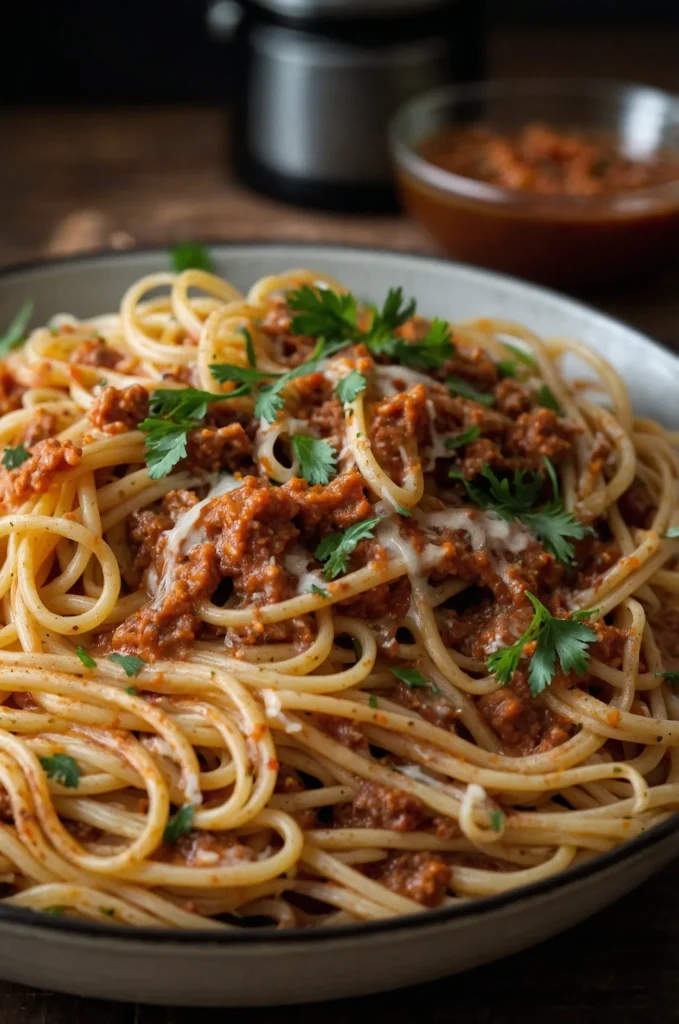The Definitive Guide to Classic Italian Pasta Recipes: Authenticity, Techniques & Regional Secrets
Discover my collection of authentic and timeless classic Italian pasta recipes that bring the flavors of Italy to your table.

There’s something almost magical about Italian pasta. From the first twirl of spaghetti around your fork to the satisfying bite of perfectly al dente rigatoni, classic Italian pasta recipes have captivated food lovers worldwide for centuries. This isn’t just food—it’s tradition, heritage, and artistry all wrapped up in deceivingly simple dishes that have stood the test of time.
But what makes an Italian pasta dish truly “classic”? Are they age-old techniques passed down through generations? The purity of ingredients? The perfect harmony of flavors? In this comprehensive guide, we’ll explore the authentic essence of Italy’s most beloved pasta traditions, delving deep into the techniques, ingredients, and regional secrets that transform basic components into culinary masterpieces.
Whether you’re an experienced home cook looking to perfect your pasta game or a passionate food enthusiast eager to understand what makes these dishes so unique, this guide offers everything you need to master the art of classic Italian pasta. From the creamy perfection of Carbonara to the rustic simplicity of Cacio e Pepe, we’ll explore not just recipes, but the stories, techniques, and cultural context behind Italy’s pasta patrimony.
As someone who has studied Italian culinary traditions extensively and cooked alongside home cooks and professional chefs throughout Italy’s diverse regions, I’m delighted to share these authentic techniques and insider tips that elevate good pasta to truly great pasta.
Content Overview
Table of Contents
Popular Classic Italian Pasta Recipes Variation
The Core Classics: Italy’s Timeless Pasta Treasures
Carbonara: Rome’s Creamy Egg-Based Masterpiece
Pronunciation: kahr-boh-NAH-rah

History & Origin
Born in the trattorias of Rome, Carbonara has a surprisingly recent history compared to many Italian classics. While its exact origins remain debated, most food historians believe it emerged in the mid-20th century, possibly influenced by American soldiers’ rations (eggs and bacon) during World War II. The name likely derives from “carbonaro” (charcoal burner), suggesting it was a hearty dish prepared by coal workers.
Why It’s a Classic
Carbonara represents the brilliant simplicity that defines Italian cuisine—minimal ingredients transformed through technique into something extraordinary. The magic lies in creating a silky, creamy sauce without using a drop of actual cream, instead relying on the perfect emulsion of eggs, cheese, and starchy pasta water.
Authentic Ingredients
- Pasta: Traditionally spaghetti, though tonnarelli or rigatoni are also authentic choices
- Guanciale: Cured pork jowl (not pancetta or bacon, though these are common substitutions)
- Eggs: Fresh, high-quality whole eggs plus additional yolks
- Cheese: Pecorino Romano (not Parmigiano Reggiano, though some Roman variations include a mix)
- Black pepper: Freshly cracked, abundant
- Salt: For pasta water only
Ingredient Note: Substituting pancetta for guanciale will alter the flavor profile—guanciale’s distinctive sweetness and texture are central to authentic Carbonara. Similarly, using Parmigiano instead of Pecorino changes the sauce’s characteristic sharp tanginess.
Step-by-Step Recipe
- Prep Work:
- Bring a large pot of water to a boil (approximately 4 quarts)
- Cut 150g guanciale into small cubes or strips
- In a mixing bowl, whisk 2 whole eggs and 2 egg yolks with 50g finely grated Pecorino Romano and abundant freshly ground black pepper
- Cook the Guanciale:
- In a cold pan, add the guanciale (no oil needed)
- Heat slowly until the fat renders and the meat becomes crispy but not burnt
- Remove from heat, but keep the rendered fat in the pan
- Cook the Pasta:
- Add 2 tablespoons of salt to boiling water
- Add 400g spaghetti and cook 1-2 minutes less than the package directions
- Reserve 1 cup of starchy pasta water before draining
- The Critical Moment:
- Return pan with guanciale to medium-low heat
- Add drained pasta to the pan and toss to coat in the fat
- Remove pan from heat and let cool for 30 seconds (crucial step!)
- Add ¼ cup of pasta water to the egg mixture and whisk quickly
- Pour egg mixture over pasta and toss vigorously using tongs
- If needed, add more pasta water tablespoon by tablespoon, until the sauce reaches a silky consistency
- Serve:
- Plate immediately
- Add another sprinkle of Pecorino and freshly ground black pepper
Discover more Pasta & Alfredo Recipes
Pro Tips/Secrets
- Temperature control is everything: If the pan is too hot when adding eggs, you’ll get scrambled eggs instead of a creamy sauce
- Never add cream: Authentic Carbonara contains no cream; the creaminess comes solely from the emulsion of eggs, cheese, and starchy pasta water
- Work quickly: Once the pasta is drained, the entire finishing process should take less than 2 minutes
- Tempering eggs: Adding hot pasta water to the egg mixture before combining with hot pasta helps prevent scrambling
- Keep tossing: Continuous movement helps emulsify the sauce and coat every strand of pasta
Cacio e Pepe: The Beautiful Simplicity of Roman Pasta
Pronunciation: KAH-cho eh PEH-peh

History & Origin
One of Rome’s oldest pasta dishes, Cacio e Pepe (literally “cheese and pepper”) traces back to shepherds in the Roman countryside who carried shelf-stable ingredients—dried pasta, aged pecorino, and black peppercorns—during long journeys tending their flocks. The dish exemplifies Roman culinary philosophy: transforming humble ingredients into something extraordinary through technique.
Why It’s a Classic
Cacio e Pepe demonstrates that sometimes the simplest dishes require the most skill. With just three main ingredients, there’s nowhere to hide—execution must be flawless. Its enduring popularity showcases how Italian cuisine often celebrates minimalism rather than complexity.
Authentic Ingredients
- Pasta: Traditionally tonnarelli (square-cut spaghetti), though spaghetti works well
- Cheese: Pecorino Romano (aged sheep’s milk cheese)
- Black pepper: Whole peppercorns, freshly cracked and toasted
- Salt: For pasta water only
- Pasta water: The secret ingredient that creates the sauce
Ingredient Note: While some modern variations include butter or olive oil, authentic Cacio e Pepe relies solely on starchy pasta water to create the emulsion with cheese.
Step-by-Step Recipe
- Prep Work:
- Bring a pot of water to a boil (use less water than normal—about 3 quarts for 400g pasta—to ensure extra-starchy water)
- Finely grate 150g Pecorino Romano
- Crack 2 tablespoons black peppercorns in a mortar and pestle or coarsely grind
- Toast the Pepper:
- In a large, dry skillet over medium heat, toast cracked peppercorns until fragrant (about 30 seconds)
- Set aside 1/3 of the pepper for garnish
- Cook the Pasta:
- Add 1 tablespoon salt to boiling water (less than usual as Pecorino is quite salty)
- Add 400g tonnarelli or spaghetti and cook until very al dente (2-3 minutes less than package directions)
- Reserve 2 cups of pasta water before draining
- Create the Sauce:
- Return skillet with toasted pepper to medium heat
- Add 1 cup of hot pasta water to the skillet and bring to a simmer
- Add drained pasta to the skillet
- Gradually add grated Pecorino, constantly tossing with tongs
- Add more pasta water as needed, a few tablespoons at a time, until cheese melts into a creamy sauce that coats the pasta
- Serve:
- Transfer to warm plates immediately
- Garnish with reserved toasted pepper and additional Pecorino
Pro Tips/Secrets
- The pasta water is crucial: The starchier the better—this is what creates the creamy emulsion
- Work quickly: The dish should be assembled rapidly while everything is hot
- Constant movement: Never stop tossing the pasta as you add the cheese to prevent clumping
- Temperature balance: If the pan is too hot, the cheese will seize; if too cool, it won’t melt properly
- Serve immediately: This dish waits for no one—it should go straight from pan to plate
Pasta alla Amatriciana: The Bold Tomato-Guanciale Classic
Pronunciation: ah-mah-tree-CHAH-nah

History & Origin
Originating in the town of Amatrice in central Italy (formerly part of Abruzzo, now in Lazio), this iconic dish celebrates the pastoral traditions of the region. Dating back to the 18th century, it began as a simple preparation called “gricia” (pasta with guanciale and cheese) before tomatoes were later added to create what we now know as Amatriciana.
Why It’s a Classic
Amatriciana perfectly balances sharp, sweet, and savory notes in a harmonious sauce that clings beautifully to pasta. The umami-rich combination of pork, tomato, and aged cheese creates a depth of flavor that belies its relatively short ingredient list.
Authentic Ingredients
- Pasta: Traditionally bucatini, though spaghetti is common
- Guanciale: Cured pork jowl (not pancetta or bacon)
- Tomatoes: San Marzano tomatoes or other high-quality peeled tomatoes
- Cheese: Pecorino Romano
- Chili flakes: For subtle heat
- White wine: Small amount for deglazing (regional variation)
- Salt & black pepper: To taste
Ingredient Note: While onions and garlic appear in some modern recipes, the traditional Amatriciana sauce contains neither. Similarly, authentic versions do not include basil or other herbs.
Step-by-Step Recipe
- Prep Work:
- Bring a large pot of water to a boil
- Cut 150g guanciale into 1cm strips or cubes
- Crush 400g peeled tomatoes by hand or roughly chop
- Render the Guanciale:
- In a cold, large skillet, add the guanciale (no oil needed)
- Heat slowly until fat renders and meat becomes crispy but not burnt
- Remove about half the rendered fat if excessive
- Create the Sauce:
- Add ¼ teaspoon chili flakes to the pan
- Optional: Add a splash of white wine and let it evaporate
- Add crushed tomatoes
- Simmer for 15-20 minutes until slightly thickened, stirring occasionally
- Season with a pinch of salt if needed (guanciale is already salty)
- Cook the Pasta:
- Add 2 tablespoons of salt to boiling water
- Add 400g bucatini and cook until very al dente
- Reserve 1 cup of pasta water before draining
- Finish the Dish:
- Add drained pasta directly to the sauce
- Add ¼ cup pasta water and 50g grated Pecorino Romano
- Toss vigorously over medium heat until pasta is well-coated and sauce has thickened
- Add more pasta water if needed to maintain creamy consistency
- Serve:
- Plate and top with additional grated Pecorino Romano
- Optional: Add freshly ground black pepper to taste
Discover more Pasta & Alfredo Recipes
Pro Tips/Secrets
- Guanciale fat is flavor: While you may remove some if excessive, this fat carries much of the dish’s flavor
- No garlic or onion: Though common in adaptations, authentic Amatriciana contains neither
- Tomato texture: For best results, hand-crush tomatoes rather than blending for a more rustic texture
- Sauce consistency: The final sauce should coat the pasta without pooling on the plate
- Pasta choice matters: Bucatini’s hole captures sauce inside the pasta strand, creating a more complex eating experience
Ragù alla Bolognese: The Rich Northern Italian Meat Sauce
Pronunciation: ra-GOO ah-la bo-lo-NYEH-zeh

History & Origin
Perhaps Italy’s most internationally renowned pasta sauce, Ragù alla Bolognese, originates from Bologna in the northern region of Emilia-Romagna. Developed over centuries and first documented in the late 18th century, this slow-cooked meat sauce reflects the richness of the fertile Po Valley. In 1982, the Bologna Chamber of Commerce officially registered the authentic recipe to preserve its tradition.
Why It’s a Classic
Bolognese represents Italian cooking’s dedication to patience and technique. Unlike quick-cooking pasta sauces, authentic ragù requires hours of gentle simmering to develop its characteristic depth and complexity. The sauce is a perfect expression of northern Italian cuisine’s richer, butter-and-meat-forward approach compared to southern Italy’s olive oil and tomato-centric dishes.
Authentic Ingredients
- Pasta: Traditionally served with tagliatelle, NOT spaghetti (which is a non-Italian pairing)
- Meat: Equal parts ground beef and pork (some variations include veal)
- Aromatics: Finely chopped onion, carrot, and celery (soffritto)
- Pancetta: Small amount, finely diced
- Wine: Dry white wine (not red in the traditional recipe)
- Milk: Small amount added toward the end of cooking
- Tomatoes: Tomato paste and whole peeled tomatoes (in modest quantity)
- Stock: Beef or vegetable stock for moisture
- Seasonings: Salt, pepper, and a touch of nutmeg
- Olive oil and butter: For sautéing
Ingredient Note: Authentic Bolognese is not a heavily tomato-based sauce; tomatoes provide color and acidity but don’t dominate. Also, garlic is notably absent from the traditional recipe.
Step-by-Step Recipe
- Prep Work:
- Finely dice 100g pancetta
- Prepare soffritto: Finely chop 1 medium onion, 2 carrots, and 2 celery stalks (ideally using a mezzaluna for authentic texture)
- Start the Sauce:
- Heat 2 tablespoons olive oil and 2 tablespoons butter in a heavy-bottomed Dutch oven or large pot
- Add pancetta and cook until fat renders
- Add soffritto and sauté gently until vegetables are soft but not browned (about 10 minutes)
- Add the Meat:
- Add 250g ground beef and 250g ground pork
- Break up the meat with a wooden spoon and cook until no longer pink
- Season with salt and pepper
- Building Flavors:
- Add 1 cup dry white wine and simmer until mostly evaporated
- Stir in 3 tablespoons tomato paste
- Add 1 cup crushed or finely chopped tomatoes
- Add 1 cup beef stock
- Bring to a simmer, then reduce heat to the lowest possible setting
- The Long Simmer:
- Partially cover and simmer for at least 3 hours, preferably 4-5 hours
- Stir occasionally and add more stock if the sauce becomes too dry
- In the last 30 minutes of cooking, add ½ cup whole milk and a pinch of nutmeg
- Adjust seasoning to taste
- Serve:
- Cook 400g fresh tagliatelle until al dente (or dried egg tagliatelle)
- Toss pasta with a portion of the sauce
- Serve with freshly grated Parmigiano Reggiano
Pro Tips/Secrets
- The soffritto foundation: Take time to properly prepare and slowly cook the finely chopped aromatics—this builds the flavor base
- Low and slow: Authentic Bolognese is never rushed; the long cooking time is essential
- Milk matters: Adding milk toward the end enhances richness and tenderizes the meat proteins
- Texture is key: The final sauce should be more meat than liquid, with a fine texture rather than chunky
- Refrigeration improves flavor: Make Bolognese a day ahead if possible—the flavors develop beautifully overnight
- Proper pasta pairing: In Bologna, this sauce is traditionally served with tagliatelle, not spaghetti. The flat, rough surface of tagliatelle holds the thick sauce better
Pesto alla Genovese: Liguria’s Vibrant Basil Sauce
Pronunciation: PEH-stoh ah-la jen-oh-VEH-zeh

History & Origin
Originating in Genoa, the capital of Liguria in northwestern Italy, traditional pesto (meaning “pounded” or “crushed”) has been a regional staple since the 16th century. The recipe evolved from earlier garlic-based sauces and flourished in Liguria’s unique microclimate, where basil grows with exceptional fragrance and sweetness.
Why It’s a Classic
Pesto exemplifies Italian cooking’s emphasis on freshness and regional ingredients. The vibrant green sauce requires no cooking, allowing the pure flavors of basil, olive oil, and cheese to shine through. Its versatility—equally delicious tossed with pasta, spread on bread, or used as a garnish—has made it one of Italy’s most beloved and widely-exported culinary creations.
Authentic Ingredients
- Pasta: Traditionally served with trofie, trenette, or linguine
- Basil: Young, small-leafed Genovese basil (different from common grocery store varieties)
- Garlic: Fresh garlic cloves, modest amount
- Cheese: Combination of Parmigiano-Reggiano and aged Pecorino Sardo (Sardinian pecorino)
- Nuts: Italian pine nuts (pinoli), raw
- Olive oil: High-quality Ligurian extra virgin olive oil
- Salt: Coarse sea salt
Ingredient Note: Authentic pesto never contains additives like spinach, parsley, or lemon juice. The traditional method uses a marble mortar and wooden pestle, though a food processor can substitute with some compromise in texture and flavor.
Step-by-Step Recipe
- Prep Work:
- If possible, chill the mortar and pestle in the refrigerator
- Have all ingredients measured and ready: 4 cups fresh basil leaves (about 40g), 2 small garlic cloves, 2 tablespoons pine nuts, ½ cup grated Parmigiano-Reggiano, ¼ cup grated Pecorino Sardo, ½ cup Ligurian olive oil, pinch of salt
- Traditional Mortar Method:
- Add garlic and a pinch of coarse salt to the mortar
- Crush with pestle using a rotary movement until creamy
- Add pine nuts and continue crushing until incorporated
- Add basil leaves gradually, crushing with circular movements against the sides
- When basil has released its oils and created a green paste, add cheeses
- Slowly drizzle in olive oil while continuing to stir with the pestle until the sauce reaches the desired consistency
- Modern Food Processor Method (if necessary):
- Pulse garlic and pine nuts until roughly chopped
- Add basil and a pinch of salt
- Pulse just until basil is chopped but still has texture
- With the machine running, slowly drizzle in olive oil
- Transfer to a bowl and fold in grated cheeses by hand
- Cook the Pasta:
- Bring a large pot of water to a boil
- Add salt (about 2 tablespoons)
- Cook 400g pasta until al dente
- Reserve 1 cup of pasta water before draining
- Finish the Dish:
- In a large bowl, thin the pesto with 2-3 tablespoons pasta water
- Add drained pasta and toss gently
- Add more pasta water if needed to create a silky consistency
- Serve immediately with a drizzle of olive oil
Pro Tips/Secrets
- Basil handling: Never wash basil just before making pesto—moisture promotes oxidation. Instead, clean leaves in advance and thoroughly dry
- No heat: Authentic pesto is never heated; hot pasta and pasta water provide the only heat needed
- Preventing oxidation: Place plastic wrap directly on pesto’s surface if not using immediately
- Pine nut substitution: While the traditional recipe demands pine nuts, walnuts can substitute in a pinch (though this creates a different sauce)
- Saving summer basil: Make pesto in large batches when basil is at peak season, then freeze in ice cube trays covered with a thin layer of olive oil
- Regional variation: In Genoa, some cooks add a small boiled potato and green beans to the pasta for authentic “pasta al pesto”
Essential Techniques for Perfect Pasta
Cooking Pasta Perfectly
Properly cooked pasta forms the foundation of every great pasta dish. While seemingly simple, achieving perfect al dente pasta requires attention to detail:
The Pasta Water
- Quantity: Use 4-6 quarts of water for 1 pound of pasta
- Salinity: Season with 1-2 tablespoons salt per pound of pasta (it should taste “like the sea”)
- Timing: Add salt only after water reaches a full boil
- Never add oil: Contrary to popular belief, adding oil to pasta water prevents sauce from adhering to the pasta
The Cooking Process
- Full boil: Always add pasta to rapidly boiling water
- Stirring: Stir immediately after adding pasta to prevent sticking
- Timing: Start testing 2 minutes before the package directions indicate
- Al dente defined: Pasta should offer slight resistance when bitten, but without a chalky center
- Reserving water: Always save some starchy cooking water before draining
Pasta Shapes and Purposes
Understanding which pasta shape works best with which sauce type is fundamental to Italian cooking:
| Pasta Shape | Best Paired With | Why It Works |
|---|---|---|
| Long, thin (spaghetti, linguine) | Oil-based or light tomato sauces | Sauce coats the strands evenly |
| Ribbon (tagliatelle, pappardelle) | Rich, meaty sauces | Wide surface holds hearty sauces |
| Tubular (rigatoni, penne) | Chunky vegetable sauces | Tube shape captures sauce and ingredients |
| Twisted (fusilli, gemelli) | Pesto, cream sauces | Grooves hold thicker sauces |
| Cupped (orecchiette, conchiglie) | Vegetable-heavy sauces | Shape captures small ingredients |
| Stuffed (ravioli, tortellini) | Light broths or delicate sauces | Let’s fill the remaining star |
Discover more Pasta & Alfredo Recipes
The Magic of Pasta Water
Often called “liquid gold” by Italian chefs, starchy pasta water is the secret ingredient that transforms good pasta into extraordinary pasta:
Why It Matters
- Natural thickener: Contains released starch that helps sauces cling to pasta
- Emulsifier: Helps oil and water-based ingredients combine smoothly
- Moisture control: Allows you to adjust sauce consistency without diluting flavor
- Salt content: Already seasoned to complement the pasta dish
How to Use It
- Reserve before draining: Set aside at least 1 cup before draining pasta
- Add gradually: Incorporate a few tablespoons at a time while finishing the sauce
- Timing: Add when combining pasta and sauce while the heat is still on
- Visual cue: The sauce should coat pasta with a silky sheen when properly emulsified
Sauce Emulsification
The difference between pasta swimming in sauce and pasta perfectly coated in a clingy, silky sauce comes down to proper emulsification:
The Technique
- Undercook pasta slightly: Drain when still very al dente
- Finish in the sauce: Transfer pasta directly to the sauce
- Add pasta water: Introduce small amounts of starchy water
- Keep moving: Toss or stir constantly—never let the pasta sit still
- Maintain heat: Keep pan on low-medium heat during this process
- Test consistency: Sauce should coat the back of a spoon but not be heavy
Why It Works
- Mechanical action: The movement helps create an emulsion
- Heat catalyst: Gentle heat activates starches and helps ingredients combine
- Timing advantage: Pasta finishes cooking while absorbing sauce flavors
- Texture improvement: Creates a unified dish rather than “pasta with sauce on top”
Understanding Key Italian Ingredients
The quality of ingredients makes or breaks authentic Italian cooking. Here’s what you need to know about the cornerstone ingredients in classic pasta dishes:
Olive Oil Essentials
Italy produces some of the world’s finest olive oils, and each region’s oil carries distinct characteristics:
- Ligurian olive oil: Delicate, light, with subtle nutty notes—perfect for pesto
- Tuscan olive oil: Robust, peppery, with grassy notes—ideal for drizzling on finished dishes
- Sicilian olive oil: Fruity, bold, sometimes with tomato notes—excellent for cooking
- DOP certification: Denominazione di Origine Protetta guarantees authentic regional production
Shopping Tip: Look for “extra virgin,” “first cold-pressed,” and harvest dates—the fresher, the better. Always store away from heat and light.
The World of Italian Cheeses
Italian cheeses provide much more than mere toppings—they form integral components of pasta sauces:
- Parmigiano-Reggiano: The “king of cheeses” aged 24-36 months, offering crystalline texture and complex nutty flavor. Best in northern Italian dishes
- Pecorino Romano: Sharper, saltier sheep’s milk cheese traditional in central Italian cooking, especially Roman dishes
- Grana Padano: Similar to Parmigiano but milder, with shorter aging
- Ricotta Salata: Pressed, salted ricotta used in southern dishes like Pasta alla Norma
Authenticity Tip: Real Parmigiano-Reggiano has the name stamped on the rind and should never be pre-grated.
Tomato Varieties & Uses
Not all tomatoes are created equal, and Italian cooking distinguishes carefully between varieties:
- San Marzano DOP: Grown in volcanic soil near Naples, these plum tomatoes offer the perfect balance of sweetness and acidity with minimal seeds. Ideal for cooked sauces
- Pomodorini di Pachino: Small Sicilian tomatoes with intense sweetness, perfect for quick, fresh sauces
- Passata: Uncooked tomato purée, strained of seeds and skin
- Pelati: Whole peeled tomatoes, usually preserved in their juice
- Concentrato: Tomato paste, used in small quantities to enhance depth of flavor
Quality Indicator: Quality canned tomatoes should contain only tomatoes, salt, and possibly basil leaf—no citric acid or added seasonings.
Cured Meats in Pasta
Several traditional pasta dishes rely on Italy’s remarkable cured pork products:
- Guanciale: Cured pork jowl is essential for Carbonara, Amatriciana, and Gricia. Offers a distinctive sweet-fatty flavor that cannot be authentically substituted
- Pancetta: Cured pork belly, milder than guanciale, often used in soffritto and Bolognese
- Prosciutto: Cured ham leg, used in filled pastas and occasionally in cream-based sauces
- Lardo: Cured back fat, sometimes melted as a cooking fat in northern dishes
Regional Note: Central Italian regions (Lazio, Umbria, and Abruzzo) particularly treasure guanciale in their traditional pasta dishes.
Regional Variations
Italian pasta isn’t monolithic—tremendous regional diversity exists across Italy’s twenty regions:
Northern Italian Pasta Traditions
- Emilia-Romagna: Famous for fresh egg pasta like tagliatelle and tortellini, often served with rich meat ragù or butter-based sauces
- Lombardy: Home to buckwheat pasta (pizzoccheri) and butter-forward preparations
- Piedmont: Known for agnolotti (filled pasta) and tajarin (thin egg noodles)
- Liguria: Celebrates fresh herbs in pesto served with trofie or trenette
Central Italian Pasta Traditions
- Tuscany: Features wider pappardelle with game-based ragù and bread-thickened soups
- Lazio (Rome): Celebrates the “holy trinity” of pasta dishes—Carbonara, Amatriciana, and Cacio e Pepe
- Umbria: Known for powerful truffle-accented pastas and hearty strangozzi
- Marche: Specializes in vincisgrassi (layered pasta) and passatelli (bread-based pasta)
Southern Italian Pasta Traditions
- Campania: Home to Neapolitan ragù, pasta with seafood, and the birthplace of dried durum wheat pasta
- Sicily: Features pasta con le sarde (with sardines and wild fennel) and pasta alla Norma (eggplant)
- Puglia: Known for orecchiette with turnip tops and simple, vegetable-forward preparations
- Calabria: Celebrates spicy pastas with ‘nduja and peperoncino
Pairing Suggestions
The perfect accompaniment elevates an Italian pasta dish from excellent to extraordinary:
Wine Pairings
- Carbonara: Medium-bodied white like Frascati or light red like Montepulciano d’Abruzzo
- Cacio e Pepe: Crisp white like Pecorino or Vermentino
- Amatriciana: Dry, acidic red like Sangiovese or Montepulciano
- Bolognese: Medium-bodied red with good structure like Chianti Classico or Barbera
- Pesto: Light, crisp white like Vermentino or Pigato from Liguria
Bread Service
- When to serve: Unlike American customs, Italians rarely have bread with pasta—it’s either/or
- Regional breads: If serving bread before pasta, consider regional pairings (Ligurian focaccia before pesto, Tuscan unsalted bread before Bolognese)
Side Dishes
- Traditional approach: Pasta is typically served as a primo (first course), followed by a meat or fish secondo with vegetable contorni (sides)
- Modern single-course approach: If serving pasta as a main course, consider a light leafy green salad dressed simply with olive oil and vinegar
Frequently Asked Questions
Q: Can I use cream in Carbonara?
A: No, authentic Carbonara never contains cream. The sauce’s creaminess comes exclusively from the emulsion of eggs, cheese, and starchy pasta water. Adding cream creates a different dish entirely.
Q: What are the best dried pasta brands?
A: For high-quality dried pasta, look for bronze-die extruded options with rough surfaces that hold sauce well. Recommended brands include Rustichella d’Abruzzo, Martelli, De Cecco, and Garofalo. Always check for packages labeled “trafilata al bronzo” (bronze-die extruded).
Q: Should I make fresh pasta for these classic dishes?
A: Not necessarily. Many classic Italian pasta dishes traditionally use dried pasta, not fresh. Carbonara, Amatriciana, and Cacio e Pepe typically use dried pasta, while Bolognese traditionally calls for fresh egg pasta like tagliatelle.
Q: Why is my sauce separating or becoming watery?
A: This typically happens when emulsification fails. Make sure to: 1) Reserve starchy pasta water, 2) Finish cooking pasta in the sauce, 3) Maintain gentle heat while tossing, and 4) Add pasta water gradually while constantly moving the pasta.
Q: What’s the difference between northern and southern Italian pasta dishes?
A: Northern Italian pasta tends to feature egg-based fresh pasta, butter, cream, and meat-based sauces. Southern Italian pasta more commonly uses dried durum wheat pasta with olive oil, tomatoes, vegetables, and seafood.
Q: How do I prevent pasta from sticking together?
A: The most effective methods are: 1) Use plenty of water, 2) Stir immediately after adding pasta to water, 3) Never add oil to the water, 4) Sauce the pasta immediately after draining, and 5) Always reserve pasta water to loosen if needed.
Conclusion
The timeless appeal of classic Italian pasta dishes lies in their perfect balance of simplicity and technique. While the ingredient lists may be short, mastering these recipes requires attention to detail, quality components, and respect for tradition. The techniques you’ve learned—from perfect pasta cooking to sauce emulsification—will serve you across countless pasta preparations.
What makes these classics so enduring is their honesty: when prepared with care
